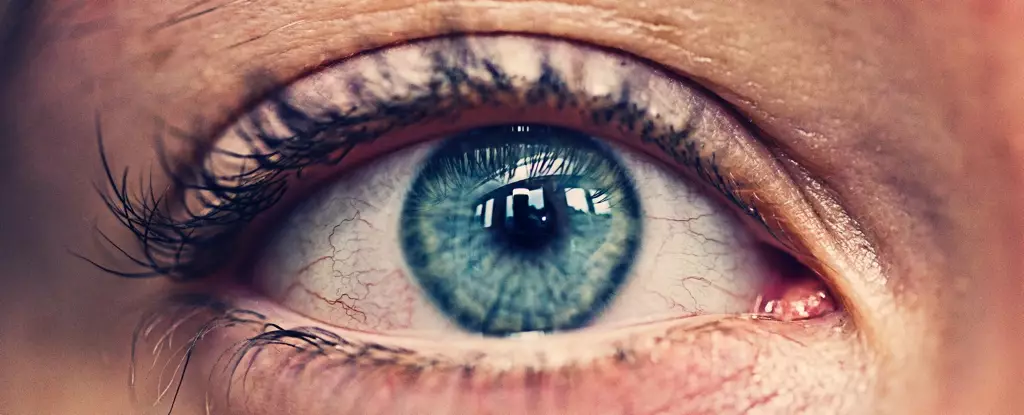While climate change is often associated with drastic weather patterns and rising sea levels, its lesser-known impact on human health—specifically eye health—deserves urgent attention. Many individuals will recognize the importance of eye health only when they personally face challenges, much like Alka Kamble, a farmworker from Jambhali village in Maharashtra, India. After five frustrating months of experiencing blurred vision, Kamble finally sought medical assistance, not due to proactive care but because of a community initiative offering free eye check-ups. It was during this visit that she discovered the alarming connection between her long hours of outdoor labor, the increasing intensity of climate change, and the onset of cataracts—the leading cause of vision impairment globally.
Kamble’s narrative is not just an isolated incident but a growing concern in agricultural communities worldwide. She represents countless people who, constrained by economic and time limitations, often ignore early signs of health issues. When looking deeper, we uncover a disturbing trend where the harsh realities of climate change have begun to intertwine with poor eye health outcomes, particularly in vulnerable populations who work outdoors.
Increased Heat: A Catalyst for Eye Diseases
Research indicates that rising global temperatures have a direct correlation with increased cases of cataracts and other eye disorders. With Earth’s average surface temperature hitting historic highs, numerous studies have illustrated how elevated temperatures lead to biological stress within the human body, especially the eyes. Lucía Echevarría-Lucas, an ophthalmologist from Spain, highlights a worrying phenomenon where prolonged exposure to intense heat can compromise the natural defense mechanisms of the eyes, thereby worsening conditions like cataracts.
Currently, as heatwaves become frequent and extreme, agricultural communities face significant challenges. For instance, Kamble, having worked under the sun without adequate protection, developed cataracts at a significantly younger age than normal. The severity of heat also heightens the risk of heatstroke, which exacerbates the production of harmful molecules known as reactive oxygen species. These molecules are notorious for damaging the crystalline proteins in the eye lens, leading to opacities and vision impairment.
UV Radiation Exposure and Its Detrimental Effects
In tandem with escalating temperatures, increased exposure to ultraviolet (UV) radiation emerges as another alarming factor in the degradation of eye health. As the climate changes, people often spend more time outdoors not only due to higher temperatures but also due to lifestyle adjustments. Unfortunately, regions experiencing extreme weather, such as Southern California, witness a corresponding surge in UV radiation levels—a phenomenon exacerbated by environmental changes that diminish the atmospheric moisture that typically absorbs UV rays.
Echevarría-Lucas and her colleague José María Senciales González underscore how this increased UV exposure generates reactive oxygen species, directly damaging the eye lens and its cellular DNA. The implications are immense: as this damage escalates, conditions like keratitis, pterygium, and conjunctivitis become more prevalent, further emphasizing the necessity to consider climate change within the broader context of public health.
Nutritional Deficiencies and Eye Health
Venturing beyond direct environmental factors, the climate crisis breeds food insecurity, which poses an additional risk to eye health. Increased droughts and changing weather patterns often lead to nutritional deficits, particularly in essential vitamins and trace minerals crucial for optic nerve health. Deficiencies in copper, vitamin B12, and vitamins A, C, and E can contribute to ocular health deterioration, further compounding the challenges faced by those like Kamble in rural settings.
Environmental challenges also drive people towards unsafe water sources during droughts, heightening the risk of waterborne eye infections. It becomes clear that sustainable agricultural practices and resilient food systems are not merely advisable; they are essential for maintaining the holistic health of vulnerable populations.
Strategic Interventions: A Call to Action for Eye Health
Addressing the entwined issues of climate change and eye health necessitates targeted intervention strategies. Outdoor workers must be provided with adequate shade and rest breaks to lessen exposure to extreme heat. Health professionals stress the importance of proper eyewear—UV-filter sunglasses and visors can drastically reduce solar penetration, offering near 38% more protection. Further, those engaged in farming should be educated about the significance of protective measures and the essential nutrients vital for maintaining eye health.
Moving beyond individual measures, there is a pressing need for policy interventions to address the overarching issue. Initiatives like India’s National Programme for Control of Blindness and Visual Impairment serve as blueprints for providing reliable and affordable access to eye care, but they need to be expanded and adapted in line with climate-driven realities. Global commitments to reduce greenhouse gas emissions and to address ozone depletion also play crucial roles in safeguarding ocular health worldwide.
As exemplified by Kamble’s experience, the crisis surrounding climate change and eye health is real and pressing. It’s high time we acknowledge this interconnection and mobilize efforts to create a healthier future for all, emphasizing the urgent need for social justice in health care, education, and environmental sustainability.

